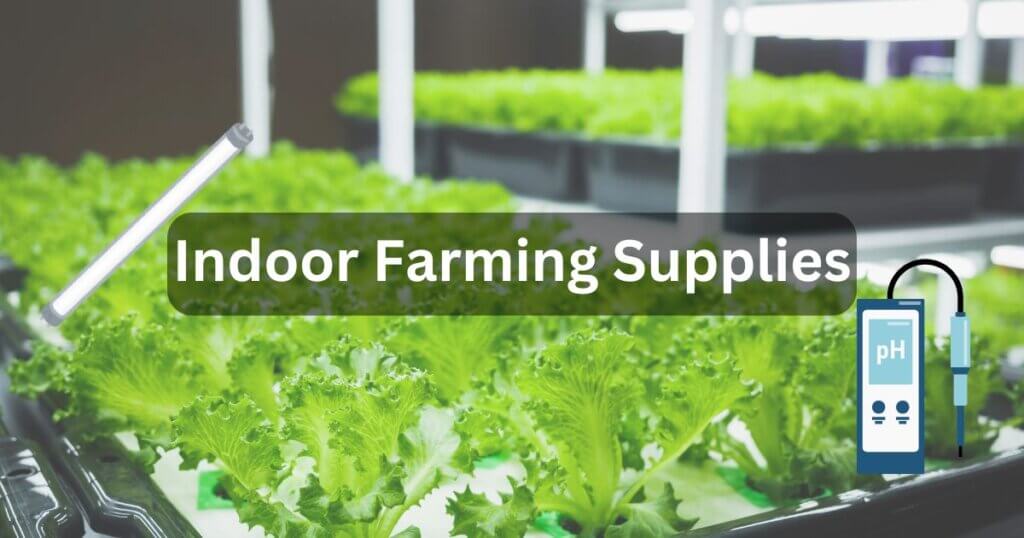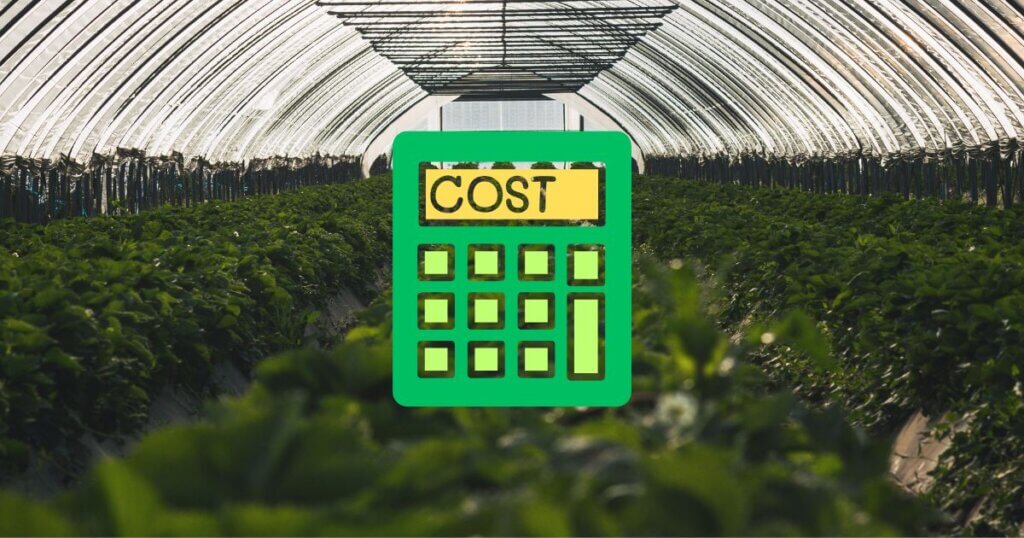Harnessing Nature’s Goodness: Indoor Crop Beauty Products

Some of the links in this post are affiliate links. As an Amazon Associate, we earn a referral fee from qualifying purchases—at no extra cost to you.
Imagine a world where beauty thrives indoors, where the power of nature is harnessed to enhance our well-being. In this age of innovation, indoor crop beauty products are revolutionizing the beauty industry. These products, infused with the essence of nature’s bounty, offer a refreshing alternative to conventional cosmetics. From nutrient-rich facial serums to plant-based hair treatments, indoor crop beauty products are transforming how we care for our skin, hair, and overall beauty regimen.
Table of Contents
Embracing Nature’s Secrets for Beauty
The Rise of Indoor Crop Beauty
In recent years, there has been a remarkable surge in the popularity of indoor crop beauty products. People are becoming more conscious of the ingredients they put on their bodies and the impact of their choices on the environment. Indoor crop beauty products offer a sustainable and eco-friendly solution, as they are often cultivated in controlled environments using advanced technologies such as hydroponics and vertical farming.
The Benefits of Indoor Crop Beauty Products
- Rich in Nutrients: Indoor crop beauty products contain essential vitamins, minerals, and antioxidants derived from nature. These nutrients nourish the skin and hair, promoting a healthy and radiant appearance.
- Environmentally Friendly: We reduce the need for harmful pesticides and herbicides by cultivating crops indoors. Indoor farming techniques also minimize water usage and eliminate the carbon footprint associated with traditional agriculture.
- Sustainable Practices: Indoor crop beauty products are often sourced from regenerative farming practices, ensuring the preservation and renewal of natural resources.
- Customization and Personalization: With indoor crop beauty products, it’s possible to tailor skincare and haircare routines to individual needs. From selecting specific plant extracts to formulating personalized blends, these products offer a unique and personalized experience.
The Science Behind Indoor Crop Beauty
Behind the scenes of indoor crop beauty products lies a fascinating realm of scientific advancements. Cutting-edge techniques like tissue culture and bioengineering allow researchers to optimize plant growth, increase nutrient content, and enhance the bioavailability of active compounds. This meticulous attention to detail ensures that every drop of indoor crop beauty product is brimming with nature’s goodness.
Unveiling the Wonders of Indoor Crop Beauty Products
Revitalizing Skincare
1. Illuminating Facial Serum
Indoor crop beauty products offer diverse facial serums designed to revitalize and illuminate the skin. Ingredients like kale extract, rich in vitamins C and K, help combat dullness and enhance radiance. The soothing properties of aloe vera work harmoniously with the hydrating effects of cucumber, leaving your skin refreshed and rejuvenated.
For those looking to boost their skincare routine with the power of superfoods, this Organic Kale Face Serum offers a rich dose of vitamin C and antioxidants, perfect for brightening and rejuvenating the skin.
2. Nourishing Face Mask
Pamper yourself with a nourishing face mask infused with the goodness of indoor crops. Avocado, renowned for its moisturizing properties, deeply hydrates the skin, while chamomile extract calms and soothes. This natural blend provides a luxurious at-home spa experience, leaving your skin supple and glowing.
Treat your skin to a deep hydration session with this Avocado & Oatmeal Clay Mask, which uses the moisturizing magic of avocado and the calming effect of chamomile for a refreshed glow.
Enhancing Haircare
1. Strengthening Shampoo
Indoor crop beauty products extend their benefits to haircare as well. Strengthening shampoos enriched with herbs like rosemary and sage invigorate the scalp, promoting healthy hair growth. These botanical wonders gently cleanse the hair, removing impurities without stripping away natural oils.
Strengthen your hair naturally with the Volume & Thick Shampoo Rosemary Mint, enriched with rosemary and sage to invigorate your scalp and promote healthy growth.
2. Intensive Hair Mask
Treat your hair to an intensive nourishing mask that harnesses the power of indoor crops. The coconut oil’s deep conditioning properties and the hibiscus extract’s revitalizing effects restore luster and vitality to tired tresses. Say goodbye to dryness and hello to hair that feels soft, silky, and effortlessly beautiful.
Embracing a Green Beauty Routine
Incorporating indoor crop beauty products into your daily routine is a step towards embracing a green beauty lifestyle. By choosing these products, you contribute to the well-being of both your skin and the planet. Say goodbye to harsh chemicals and synthetic additives, and say hello to nature’s touch on your beauty journey.
As we continue to evolve and innovate, the world of indoor crop beauty products holds tremendous promise. The fusion of science and nature brings us closer to a more sustainable and conscious approach to beauty. Embrace the transformative power of indoor crop beauty products and unlock the secrets of nature for a more radiant and harmonious you.
Which plants can be used for Beauty Products?
In beauty products, various crops are utilized to create formulations catering to different skincare and haircare needs. These crops, cultivated outdoors and indoors, offer rich natural ingredients that provide nourishment, hydration, and other beneficial properties. Let’s explore some of the commonly used crops and their corresponding beauty product applications:
- Aloe Vera: Aloe vera, renowned for its soothing and hydrating properties, is a staple ingredient in skincare products. It is often found in moisturizers, face masks, and sunscreens, relieving dry or irritated skin.
- Coconut: The versatile coconut is utilized in beauty products for its moisturizing and conditioning effects. Coconut oil is commonly found in haircare products such as shampoos, conditioners, and hair masks, promoting softness and shine.
- Cucumber: Cucumber, known for its cooling and hydrating properties, is a popular ingredient in facial mists, toners, and eye creams. It helps to refresh and rejuvenate the skin, reducing puffiness and providing a soothing sensation.
- Chamomile: Chamomile, with its calming and anti-inflammatory characteristics, is often incorporated into skincare products like cleansers, serums, and moisturizers. It aids in soothing sensitive or irritated skin, promoting a balanced complexion.
- Rose: Rose extract, derived from rose petals, is used in various beauty products due to its aromatic and toning properties. It can be found in facial toners, facial oils, and perfumes, providing a delightful fragrance and promoting a youthful glow.
- Green Tea: Green tea is a popular ingredient in skincare products due to its antioxidant and anti-aging benefits. It is frequently used in facial cleansers, serums, and masks to help combat free radicals and promote a healthier complexion.
- Hibiscus: Hibiscus is valued for its rejuvenating and moisturizing effects on the skin and hair. It can be found in facial toners, serums, and hair masks, offering hydration, promoting elasticity, and enhancing the overall appearance.
- Avocado: Avocado, rich in healthy fats and vitamins, is commonly used in skincare products for its nourishing and moisturizing properties. It can be found in face creams, masks, and eye creams, helping to replenish and soften the skin.
- Kale: Kale, a nutrient-dense leafy green, is gaining popularity in beauty products due to its high vitamin and mineral content. It is often used in facial serums, creams, and masks, boosting antioxidants and promoting a vibrant complexion.
- Lavender: Lavender, known for its calming and soothing qualities, is frequently found in skin care products designed for relaxation and stress relief. It can be found in body oils, bath salts, and sleep-enhancing skincare formulations.
These are just a few examples of the crops utilized in beauty products. The beauty industry continues to explore and discover new plant-based ingredients that offer myriad benefits for skincare, haircare, and overall well-being. Beauty products can incorporate other crops depending on their specific formulations and intended uses. By harnessing the power of nature, beauty products can provide effective results while embracing sustainability and eco-consciousness.
Boost your skin’s hydration with the Innisfree Green Tea Seed Serum, packed with antioxidants from green tea to combat dryness and signs of aging.
What do these crops need to be grown indoors?
Many of the crops mentioned earlier can be successfully cultivated indoors, thanks to advancements in indoor farming techniques. Indoor farming allows for controlled environments where temperature, lighting, and other factors can be optimized for plant growth. Here are some crops that are well-suited for indoor cultivation:
- Aloe Vera: Aloe vera is an excellent choice for indoor cultivation due to its ability to thrive in drier conditions. It requires well-draining soil and bright, indirect light.
- Cucumber: Compact cucumber varieties, such as bush or dwarf varieties, can be grown indoors using trellises or vertical systems. These plants require ample sunlight, artificial growth lights, and consistent watering.
- Chamomile: Chamomile can be grown indoors as a compact herb with small, daisy-like flowers. It prefers a sunny spot near a window or under grow lights and well-drained soil.
- Rose: Certain rose varieties, such as miniature roses or patio roses, can be cultivated indoors as potted plants. They require bright light and proper airflow for healthy growth.
- Green Tea: While the tea plant (Camellia sinensis) is traditionally grown outdoors, it can be adapted for indoor cultivation properly. Green tea plants require bright, indirect light, a cool environment, and consistent moisture.
- Hibiscus: Some hibiscus varieties can be grown indoors as potted plants. They prefer bright light, warm temperatures, and regular watering.
- Avocado: Avocado trees can be grown indoors as small, manageable houseplants. They require bright, indirect light and well-drained soil. However, it’s important to note that indoor avocado trees may not bear fruit.
- Kale: Certain kale varieties, dwarf or compact varieties, can be grown indoors. They require bright, indirect light and well-drained soil. Regular harvesting of leaves promotes continuous growth.
- Lavender: Lavender can be successfully grown indoors as a fragrant herb. It prefers bright light and well-drained soil. Adequate airflow is crucial for preventing issues such as powdery mildew.
While not all crops are suitable for indoor cultivation due to space limitations or specific environmental requirements, advancements in indoor farming, such as hydroponics and vertical farming, continue to expand the possibilities for growing a wide variety of crops indoors. These techniques allow for efficient use of space and resources, making it feasible to cultivate crops like lettuce, herbs, microgreens, and other leafy greens indoors.
Indoor crop beauty products harness the potential of these indoor-grown crops, ensuring a sustainable and controlled environment that maximizes their beneficial properties for beauty and skincare applications.
Conclusion
Harnessing the goodness of indoor crops, indoor crop beauty products have emerged as a natural and sustainable alternative in the beauty industry. With their nutrient-rich formulations and eco-friendly practices, these products offer a refreshing and personalized approach to skincare and haircare. By incorporating indoor crop beauty products into our beauty routines, we nourish our bodies and contribute to our planet’s preservation. Embrace the power of nature and embark on a journey towards a greener and more beautiful future.
FAQs – Indoor Crop Beauty products
1. Are indoor crop beauty products safe for sensitive skin?
Yes, many indoor crop beauty products are formulated with natural, gentle ingredients that are suitable for sensitive skin. However, checking ingredient lists and performing a patch test before full application is recommended.
2. How do indoor crop beauty products compare in price to traditional beauty products?
Indoor crop beauty products can be slightly more expensive due to advanced cultivation techniques and sustainable practices. However, they often provide higher-quality, nutrient-rich ingredients, making them a worthwhile investment.
3. Can indoor crop beauty products be certified organic?
Yes, indoor crops can be grown using organic methods and certified accordingly. However, certification depends on factors like the farming techniques used and adherence to organic farming standards.
4. Do indoor crop beauty products have a shorter shelf life than synthetic alternatives?
Since they often contain fewer preservatives and synthetic additives, some indoor crop beauty products may have a shorter shelf life. Proper storage, such as keeping them in cool, dark places, can help extend their usability.
5. Are indoor crop beauty products vegan and cruelty-free?
Many indoor crop beauty brands prioritize vegan and cruelty-free formulations. However, checking the brand’s certifications and labels is important to ensure compliance with ethical standards.
Other Useful Resources Related To Indoor Crop Beauty Products
- Marlo Hydroponic Skincare: Explore the world’s first hydroponic skincare brand, offering pure, potent, and sustainable beauty products.
- Ulé Eco-Farm by Clean the Sky: Discover how this France-based brand utilizes vertical farming to cultivate potent plants for its skincare line.
- Vertical Farming in Cosmetics: Learn about the innovative use of vertical farming for sourcing plant-based ingredients in the cosmetics and fragrance industry.
- Precision Climate Farming for Sustainable Beauty: Understand how controlled environment agriculture supports the growth of fresh products sustainably for beauty applications.
- Farmaesthetics: A brand committed to “Sustainable Beauty®,” offering 100% natural skincare products utilizing certified organic herbs and flowers.
Some Interesting Indoor Crop Beauty Products Videos








